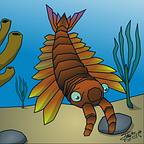Poetry and Conservation Science
A creative way to enhance environmental awareness
∘ Poetry and science education
∘ Benefits of teaching poetry
∘ Steps to create poetry for conservation scientists
Poetry and science education
There is a growing interest in artistic approaches to enhance environmental awareness in science communication [1].
Creating art can help us to value and appreciate nature and reconnect with natural areas. Something valuable since at least 50% of the world’s population lives in urban areas.
Poetry has been shown to be particularly effective in increasing students’ sense of engagement when it is integrated into science teaching [2, 3, 4].
Including poetry in any of its many forms, not only makes science disciplines more enjoyable but also offers a creative way to learn and share information with others.
This, in turn, allows students to get more involved (both cognitively and emotionally), rather than being passive recipients of information during the learning process [5].
Poetry writing also becomes an opportunity for students to develop their creativity as they learn how humans affect the Earth and share their emotions about negative ecological impacts [1].
Benefits of teaching poetry
Poetry allows people to distance themselves from an immediate problem or topic. In creativity research, this is known as the incubation period and refers to one essential element of the creative process.
Incubation periods are valuable for the act of forming ideas during the learning process.
Since creating poetry forces us to look at the world around us in order to reinterpret it and replicate it in our own way, it becomes a powerful tool that allows us to give renewed value to nature.
Shorter forms of poetry such as haiku have been shown to be particularly efficient at capturing and expressing complex themes related to environmental conservation [6].
The benefits of poetry are not restricted to students. It offers scientists a way to creatively play with language to reformulate concepts and ideas [1].
Breaking down ideas on a topic into smaller, succinct phrases can help scientists to identify key elements of a topic that need to be communicated clearly in their writings or presentations [1].
Additionally, the aesthetics of poems can help engage readers in ways that are not possible with scientific articles.
Poems made up of words or phrases found in scientific literature, offer a way for scientists to interact with audiences who might not otherwise read such literature [7, 8].
In this context, poetry is a tool with the potential to help scientists transcend disciplinary boundaries, and reach new audiences who might otherwise not be aware of or engaged with conservation issues [9].
Steps to create poetry for conservation scientists
Stephanie R Januchowski-Hartley and colleagues have a scientific article focused on poetry and environmental conservation [1].
They present a series of steps and exercises to further inspire scientists to integrate poetry into their daily practice. If you want to learn more about it, I suggest you to read their article directly.
Also, you can check out the Project Conservation Haiku blog. It is a wonderful digital media project that combines poetry, photography, and science as a way to enhance people’s commitment to conservation and the environment.
Let me know your opinion in the comments.
If you enjoy reading stories like these and want to support me as a writer, you can follow me on Medium.
See also:
